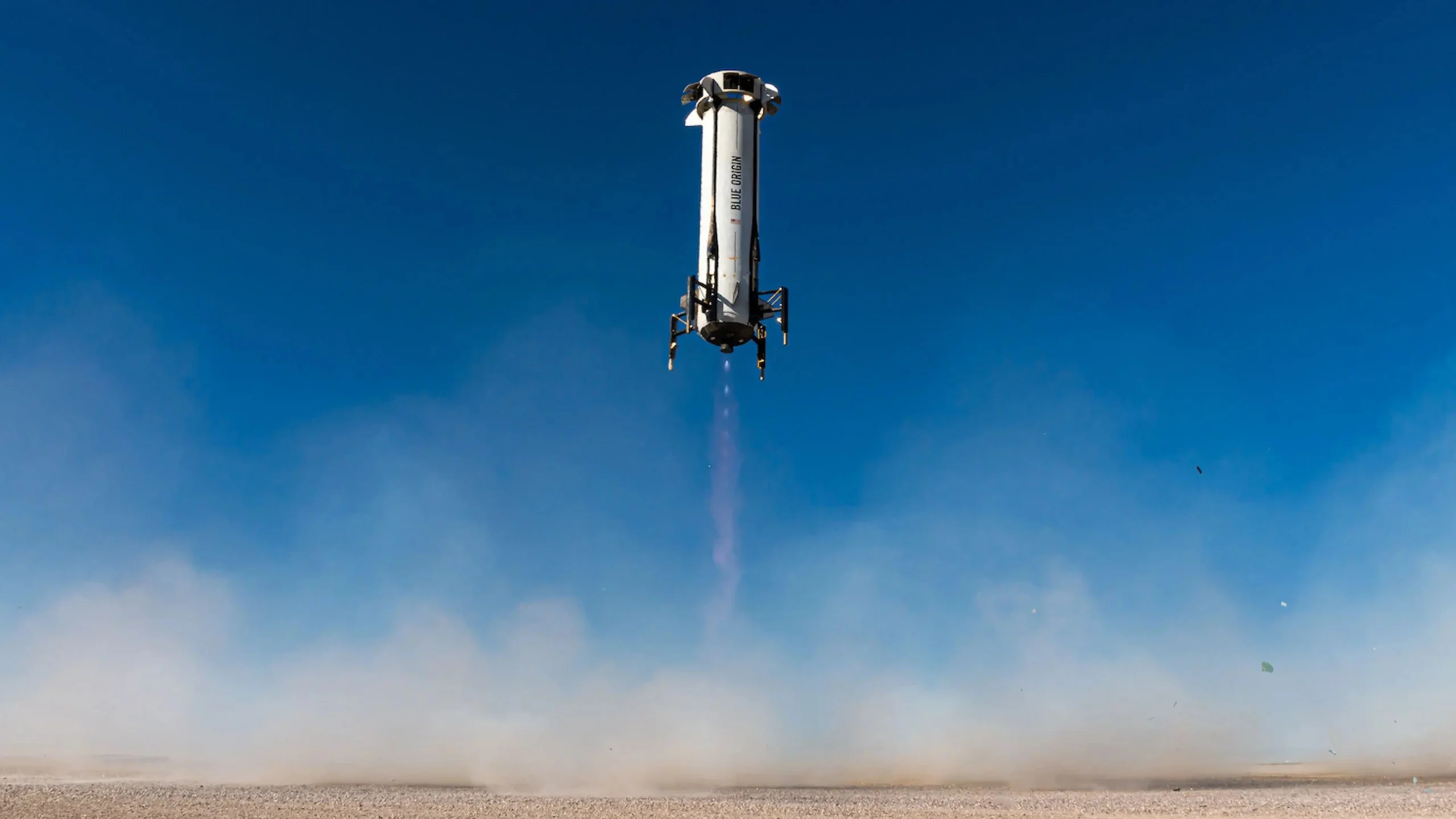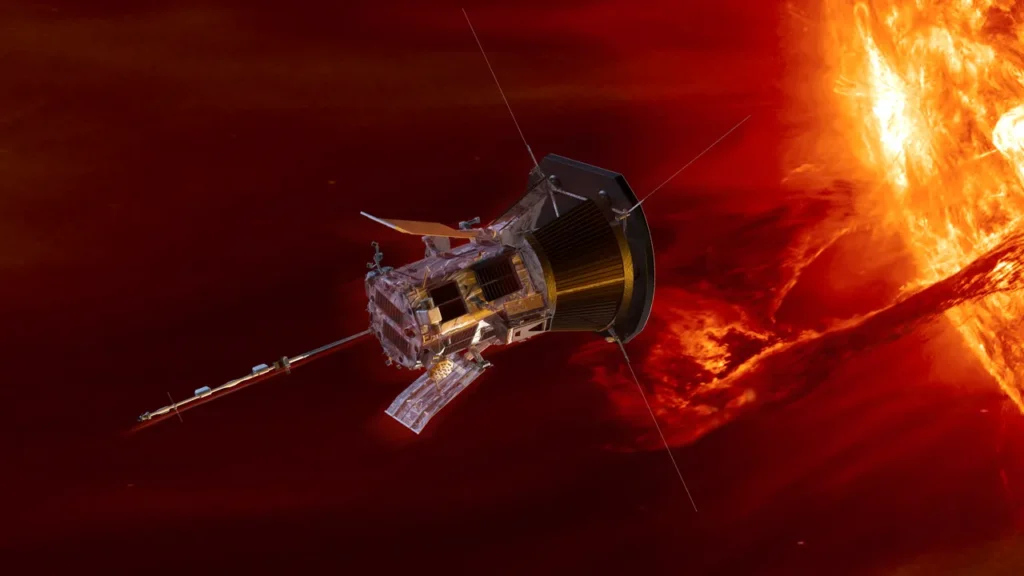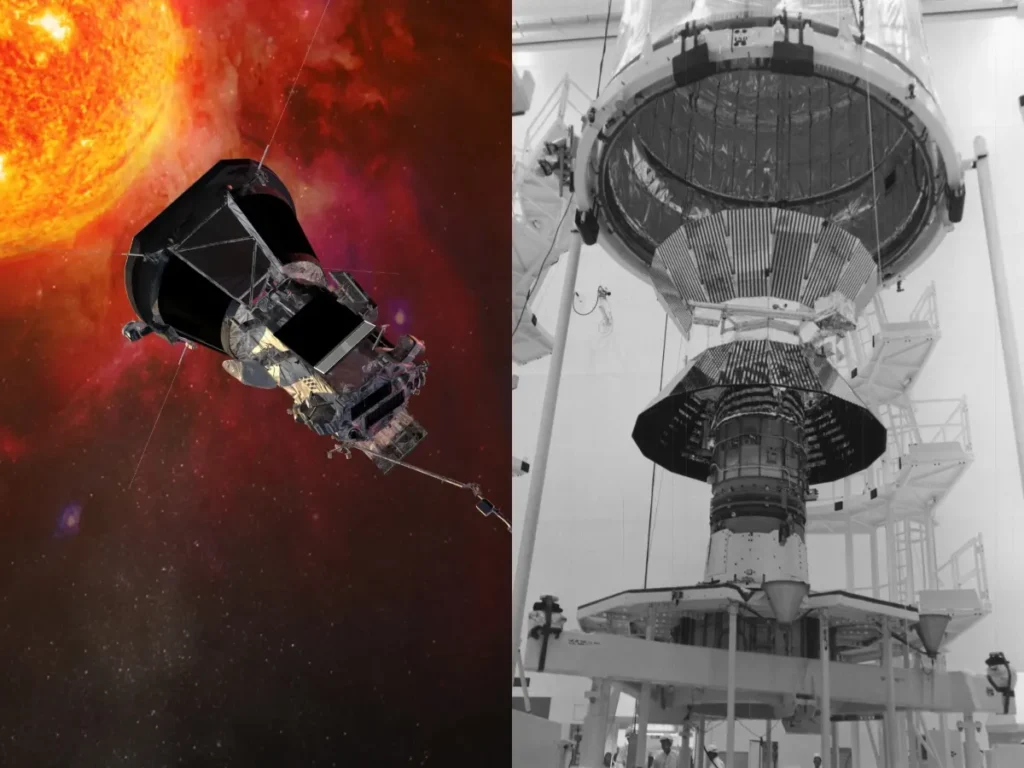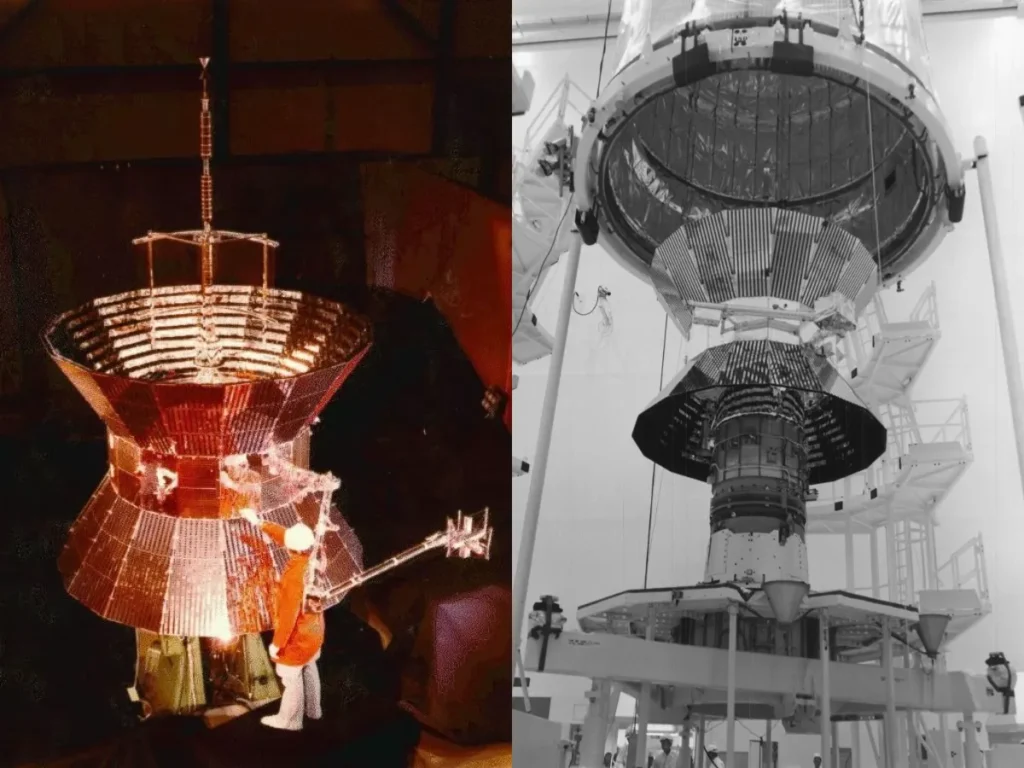
Сфера освоения космоса требует выдающихся инженерных достижений, особенно когда речь идет о скорости.
Космический корабль должен преодолеть огромные гравитационные силы и пройти огромные космические расстояния. Это делает скорость фундаментальным требованием, а не просто впечатляющей статистикой.
 Источник: Blue Origin
Источник: Blue Origin5 самых быстрых космических кораблей, когда-либо построенных
Эти замечательные машины представляют собой самые смелые попытки человечества расширить наш охват через Солнечную систему и за ее пределами.
Каждая миссия требует тщательно просчитанных траекторий и инновационных методов движения для достижения захватывающих скоростей.
1. Солнечный зонд Паркера - 192 км/с (Current Record Holder)
 Солнечный зонд Паркера; фото NASA
Солнечный зонд Паркера; фото NASAКосмическое агентство: NASA (США)
Дата запуска: 12 августа 2018
Основная цель: Исследуйте внешнюю атмосферу Солнца и корону
Максимальная скорость: 192 км / с (предположительно, более 200 км / с в предстоящих солнечных столкновениях)
В настоящее время, будучи чемпионом по скорости среди всех созданных человеком объектов, солнечный зонд Parker представляет собой квантовый скачок в разработке космических аппаратов. Эта необычная машина достигает своей феноменальной скорости благодаря сложному танцу с Венерой.
Он использует несколько гравитационных маневров, погружаясь к ближайшей звезде на расстояния, которые ранее считались невозможными.
Революционная система тепловой защиты зонда использует передовые углеродно-композитная технология. Это позволяет ему выдерживать температуру поверхности, приближающуюся к 1400 градусам Цельсия, при сохранении функциональности инструмента.
Во время своих самых смелых подходов космический корабль отправляется в 6,9 миллиона километров солнечной поверхности. Он проникает в корону, чтобы разгадать тайны, которые озадачивали астрономов на протяжении многих поколений.
2. Гелиос 2 - 70,2 км/с
 Helios 2 Spacecraft; Фото NASA и Википедия; Составлено Aviation A2Z
Helios 2 Spacecraft; Фото NASA и Википедия; Составлено Aviation A2ZКосмическое агентство: NASA / DLR (Германия)
Дата запуска: 15 января 1976 года
Основная цель: Исследование динамики солнечного ветра и поведения магнитного поля
Максимальная скорость: 70,2 км/с
Более сорока лет Helios 2 сохранял свои позиции самого быстрого искусственного объекта, прежде чем в конечном итоге уступить звание Parker Solar Probe.
Эта немецко-американская совместная работа была разработана специально для проникновения во внутреннюю Солнечную систему. Она была сосредоточена на понимании сложных взаимодействий между солнечной радиацией и магнитными полями.
Замечательная скорость космического корабля обусловлена его высокоэллиптической траекторией, которая пронесла его в пределах 43 миллионов километров от нашей звезды. Эта близость позволила Helios 2 собрать беспрецедентные измерения свойств солнечного ветра и флуктуаций магнитного поля в регионах, которые никогда ранее не исследовались.
3. Гелиос 1 - 66 км/с
 Helios 1 Spacecraft; Фото НАСА и Википедия; Составлено авиацией A2Z
Helios 1 Spacecraft; Фото НАСА и Википедия; Составлено авиацией A2ZКосмическое агентство: NASA / DLR (Германия)
Дата запуска: 10 декабря 1974 года
Основная цель: Комплексный анализ солнечной среды
Максимальная скорость: 66 км/с
Являясь первопроходцем своего более известного преемника, Гелиос 1 Создан шаблон для глубокого исследования Солнечной системы и научных исследований. Этот космический корабль следовал за траектория, аналогичнаяГелиос 2. Он использует гравитационное влияние Солнца для достижения значительного ускорения при проведении новаторских исследований.
Инновационный подход программы Helios использовал космический корабль-близнец для создания всеобъемлющего обзорного освещения солнечных явлений. Его сложный инструментальный пакет измерял излучение частиц, электромагнитные поля и интенсивность космических лучей. который был создан Первый подробный портрет внутренней Солнечной системы условия. Миссия обнаружила, что солнечный ветер испытывает быстрое ускорение гораздо ближе к Солнцу, чем предсказывали теоретические модели.
4. Новые горизонты - 16,3 км/с
 Новые горизонты: фото NASA
Новые горизонты: фото NASAКосмическое агентство: НАСА
Дата запуска: 19 января 2006 года
Основная цель: Исследование Плутона и исследование пояса Койпера
Максимальная скорость: 16,3 км/с (достигнута рекордная скорость запуска)
Новые горизонты Вырезал свою нишу в истории исследований, став первым Миссия посетит Плутон. Это фундаментально изменило научное понимание этой карликовой планеты. При вылете этот космический корабль достиг самой высокой скорости побега с Земли, когда-либо зарегистрированной. Его продвигал один из Конфигурация ракеты Atlas V Затем она была усилена гравитационной помощью Юпитера.
Эпическое путешествие к Плутону потребовало почти десятилетия, охватывая примерно 5 миллиардов километров через внешнюю Солнечную систему. Когда в июле 2015 года New Horizons наконец добралась до места назначения, она предоставила впечатляющие снимки и научные данные, которые показали Плутон как удивительно динамичный мир с массивными горными хребтами, обширными равнинами и потенциальными подземными океаническими системами.
Следуя своей исторической Встреча с Плутоном, миссия продолжилась глубже в космос Пояс КойпераУспешно исследуя древнее небесное тело Аррокота в 2019 году. Эта вторичная цель дала бесценное представление о ранних процессах формирования Солнечной системы.
5. Вояджер 1 – 17 км/с (солнечно-относительная скорость)
 Вояджер-1: Фото-пространство
Вояджер-1: Фото-пространствоКосмическое агентство: НАСА
Дата запуска: 5 сентября 1977 года
Основная цель: Исследование внешних планет, теперь проводя межзвездные исследования
Максимальная скорость: 17 км/с
Вояджер 1 Это, пожалуй, самое знаменитое достижение в области роботизированного освоения космоса. В настоящее время ведется запись как Самый далекий технологический представитель человечества. Хотя изначально не самый быстрый космический корабль при запуске, гравитационные столкновения с Юпитером и Сатурном Он резко увеличил свою скорость и установил свою текущую траекторию к звездам.
Эта знаковая миссия преобразовала планетарную науку благодаря замечательным открытиям во время ее встреч с газовыми гигантами, включая активную вулканическую активность на Ио, сложные детали системы колец и многочисленные ранее неизвестные естественные спутники.
Самое историческое достижение космического корабля произошло в августе 2012 года, когда он стал первым созданным человеком объектом, который пересек межзвездное пространство.
Работая более четырех десятилетий за пределами своих первоначальных параметров миссии, Voyager 1 продолжает передавать уникальные данные о межзвездных средних условиях, предоставляя ученым свои первые прямые измерения пространства между звездными системами.
 Изображение NASA HQ: (NASA/Joel Kowsky)
Изображение NASA HQ: (NASA/Joel Kowsky)Нижняя линия
Гравитационный побег Земли требует Минимальный порог скорости 11,2 км/сВ то время как миссии, нацеленные на внешнюю солнечную систему, требуют дополнительной скорости, чтобы свести к минимуму продолжительность транзита и сохранить функциональность инструмента во время длительных поездок.
Солнечные миссии, такие как Parker Solar Probe и оба космических аппарата Helios, должны достичь экстраординарных скоростей, чтобы преодолеть мощное гравитационное притяжение Солнца при сохранении рабочих орбит. Более высокие скорости космических аппаратов напрямую приводят к расширению научного охвата и повышению ценности миссии, что делает оптимизацию скорости критически важным фактором при планировании миссии и проектировании космических аппаратов.
Эти достижения не только позволяют выполнять текущие научные миссии, но и закладывают технологическую основу для будущих межзвездных экспедиций, которые могут достичь соседних звездных систем в разумные сроки, представляя следующий большой скачок человечества в космических исследованиях и открытиях.
Оставайтесь с нами. Следуйте за нами в социальных сетях для последних обновлений.
Присоединяйтесь к нам в Telegram Group для последних обновлений авиации. Следуйте за нами в Google News
Blue Origin успешно выполняет космический полет экипажа
Топ-5 самых быстрых космических аппаратов, когда-либо построенных в мире, впервые появился на Aviation A2Z.














